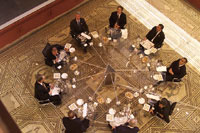|
Romans
in Germany: the Augustan Period
A Teacher Workshop held at Temple
University, Ambler Campus
March 24, 2001
Romans in
Gaul
A Teacher Workshop held at Temple
University, Ambler Campus
November 3, 2001
Romans in Germany II:
Antonine Period
A Teacher Workshop held at Temple
University, Ambler Campus
March 23, 2002
Romans
in Spain
A Teacher Workshop held at Temple
University, Ambler Campus
November 2, 2002
|
 |
ROMANS IN COLOGNE

Geography:
Cologne is the northernmost colony founded by the Romans. Click on the map at
left to see an enlarged overview of the cities founded by the Romans in Europe
Also see this
Map of Roman Empire (150 CE)
Roman History
of Cologne
Over 2000
years ago, Augustus envisioned the tribal capital of the Ubii to be the
seat of a future province of Germania. The folly of Varus changed forever the scope of the Romans' ambition, but the
city flourished and became known as Colonia Claudia Ara Agrippinensium (CCAA).
Today we know this city simply as Cologne, and it continues to be a center of
interest in Roman culture and history... (from
In Search of the Roman
Army: A Visit to
the Roemisch-Germanisches Museum
by Jenny Cline, Editor)
WEBSITES
ON THE HISTORY OF THE COLONY
Read up
on the history of COLONIA AGRIPPINENSIS
here:
Now
answer these questions (reveal the answers by simply moving your mouse over the
answer blank):
This bust is billed as Vipsania Agrippina" – the
mother of Julia Agrippina...Who did Julia, daughter of the Roman general Germanicus, marry in
48 AD? Answer >
Tiberius
Roman Ruins in
Cologne
Roman
Waterworks in Cologne:
sewer, aqueduct, baths,
 Roman
sewer / Town Hall: Rare section of a Roman municipal sewage system. Example
of the engineering skill of Roman architects. Read the article at
http://www.koeln.de/portrait/e/colognefoot2.html:
How long and how high is the Roman sewer in Cologne? Roman
sewer / Town Hall: Rare section of a Roman municipal sewage system. Example
of the engineering skill of Roman architects. Read the article at
http://www.koeln.de/portrait/e/colognefoot2.html:
How long and how high is the Roman sewer in Cologne?
Roman Baths:
ACTA TEMPESTIVA, ARCHEO newsbriefs: This article, courtesy of the editors of
ARCHEO magazine and Giovanni Lattanzi, tells about a new archeological find:
Roman baths in Cologne!
Other Roman Waterworks/Aqueducts (for
Comparative Purposes)
Go to this website for a photo of the
Roman Harbour Street
http://romanhistorybooksandmore.freeservers.com/p_cologneR.htm
A
nice essay on the construction and make-up of ancient Roman Roads by Adam Pawluk
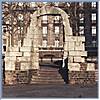
Roman North Gate, Domterrasse: Foundations and side arch of Roman
North Gate. Click on photo for info. Read the articles at
http://www.uni-koeln.de/koeln/unkommentiert.html
and
http://www.koeln.de/portrait/e/tourist2.html
to find out more about this structure.
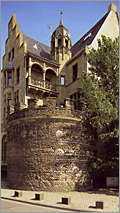
Corner tower of the Roman city wall, Cologne
Click on the photo for a larger view. Read the article at
http://www.villarustica.de/intro/index04e.html#intro08
and find out why this ancient monument is so important to our knowledge of Roman
history. There are also well-preserved mosaic decorations here.
Praetorium: Foundations of the Roman governor´s palace (1st - 4th
Century) preserved in their original form; Roman monuments and decorations. See the ruins of the praetorium at Irene's Travelogue pages (http://romanhistorybooksandmore.freeservers.com/p_cologneR.htm).
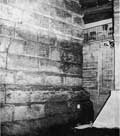
Ubiermonument (Monument of the Ubii): Oldest square-stone masonry ever
found North of the Alps (24 B.C.); Roman
port entrance: English/Latin archaeological report:
http://webrum.uni-mannheim.de/phil/webas/html/thetis4.html
Other Roman ruins in Cologne:
Tomb in Weiden: Family tomb of a Roman lord of a manor´s family (2nd
Century)
St. Severin: Preserved Roman/ Frankonian burial ground with foundation
walls of the original church
(4th C.)
Mithraeum
Castrum Divitium, Deutz: Well-preserved foundations of the Eastern
Gate
Cologne
maps out its archeological heritage using high-tech SICAD Geomatics
Roman Artefacts
in Cologne
Roman holdings of the Romisch-Germanisches
Museum in Cologne (museum
website)
(also on power point presentation
here)
-
large
mosaic of Dionysus, satyrs, and maenads:
10.57 x 7 meters (1-2 million tesserae), from oecus on west
side of peristyle of third-century CE Roman villa near modern Cologne
Cologne, Romisch-Germanisches Museum. Credits: Barbara McManus, 1988
-
mosaic
head of Aristotle;
detail
of head: from large mosaic depicting Greek philosophers
Cologne, Romisch-Germanisches Museum. Credits: Barbara McManus, 1988
-
mosaic
head of Sophocles: from large mosaic depicting Greek philosophers
Cologne, Romisch-Germanisches Museum. Credits: Barbara McManus, 1988
-
large
mosaic of Dionysus, satyrs, and maenads:
10.57 x 7 meters (1-2 million tesserae), from oecus on west
side of peristyle of third-century CE Roman villa near modern Cologne
-
life-size
model of Roman wagon modern
Cologne, Romisch-Germanisches Museum. Credits: Barbara McManus, 1988
-
Roman
silver and ivory hairpins with sculpted tops and ivory hairpin box with
relief carving of satyr and maenad
Cologne, Romisch-Germanisches Museum. Credits: Barbara McManus, 1988
-
plan
of the House of the Vettii in Pompeii modern
Cologne, Romisch-Germanisches Museum. Credits: Barbara McManus, 1988
-
terracotta
oil lamps depicting erotic scenes
Cologne, Romisch-Germanisches Museum. Credits: Barbara McManus, 1988
-
bronze
oil lamp in the form of a comic mask
Cologne, Romisch-Germanisches Museum. Credits: Barbara McManus, 1988
-
filigree
silver medallion and chain early first century CE
Cologne, Romisch-Germanisches Museum. Credits: Barbara McManus, 1988
-
silver
bracelet with child's portrait
Cologne, Romisch-Germanisches Museum. Credits: Barbara McManus, 1988
-
bust
of Agrippa 50-60 CE
Cologne, Romisch-Germanisches Museum. Credits: Barbara McManus, 1988
Keywords: Agrippa; history
-
model
of Roman soldiers quarrying stone for a construction project modern
Cologne, Romisch-Germanisches Museum. Credits: Barbara
McManus, 1988
Keywords: army; military; building
-
cameo
of Augustus wearing rayed crown of the sun god indicating deification;
first century CE
Cologne, Romisch-Germanisches Museum. Credits: Barbara
McManus, 1988
Keywords: Augustus; history; emperors; deification
-
bust
of Agrippa 50-60 CE
Cologne, Romisch-Germanisches Museum. Credits: Barbara
McManus, 1988
Keywords: Agrippa; history
-
terracotta
flask depicting a gladiatorial scene
Cologne, Romisch-Germanisches Museum. Credits: Barbara
McManus, 1988
Keywords: arena; gladiators; sports; leisure
-
small
terracotta vase with incised scene of maenads killing Orpheus or
Pentheus
Roman, third century CE
Cologne, Romisch-Germanisches Museum. Credits: Barbara
McManus, 1988
Keywords: Bacchus, bacchante, Dionysus, mythology
-
underground
corridor of Roman sewer
1988; Cologne
-
also
see Irene's Travelogue 1999 for some additional photos of varying quality
(includes
bronze bust of Roma, goddess of Rome,
and children's toys)
Pottery made
in Cologne
http://www.museenkoeln.de/rgm/perm/b_geschichte_01.htm
THE DISCOVERY AND PRESERVATION OF ANCIENT MOSAICS (USING THE COLOGNE DIONYSOS
MOSAIC AS A STARTING POINT)
http://clinton2.nara.gov/WH/New/Europe-9906/html/itinerary.html
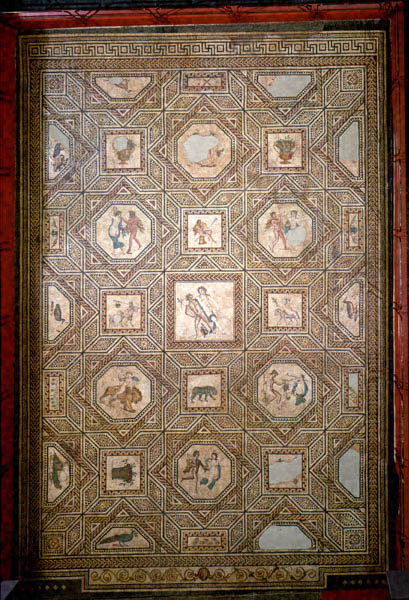
|
|

a detail of the mosaic |
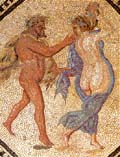 |
for a large collection of links to art
objects from antiquity with images of Dionysus, see Barbara McManus'
http://www.vroma.org/images/mcmanus_images/index4.html
Below are some images of
other Dionysian-related mosaics from around the world. Click on each
image to see a larger view and click on the attendant URL to read about
the mosaic.
Possible Assignments:
Is the mosaic in Cologne significantly different
from any of the others? (it is probably bigger than the others, and uses
almost 1.5 million tesserae!)
Make a list of the artistic compositions of these
fragments (figures, attributes, colors, orientation, group composition,
combinations of animal-mineral-vegetable-human beings.....) What
qualities of life do they tend to represent? Why would anyone want such
decoration in their tricilinium or peristyle (most common rooms of
discoveries)
|
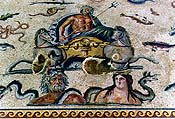 |
click on the photo, a detail from a
mosaic identified as
Dionysios with Oceanus and Thetis
for a larger view. This
is taken from
http://www.artnet.com/magazine/features/acar/acar8-28-00.asp,
a webpage devoted to the archaeological site of Zeugma, and a discussion
of the difficulties in preserving ancient mosaics, mostly because their
value makes them attractive to thieves. Zeugma has the additional problem
that its precious archaeological site is about to be inundated. |
|
Click here (http://www.zippori-usa.com/about.htm)
for a curious connection between youth, beauty, and Dionysus (from the Dionysus
mosiac at Sipporah - read all the way down to the bottom of the file).
What is the connection? What does Dionysus
have to do with youth?
Describe the artistic composition of
as many squares of the Dionysus mosaic as possible:
compare them to these other
"Dionysus mosaics" from other archaeological, sites around the world:
Homepage:
http://www.rollins.edu/arh305/annissa/sindex.htm
Hellenistic and Roman Sepphoris - mosaic is evidence of pagan influence in a
predominately Jewish City
Dionysos Mosaic at Sepphoris:
http://www.rollins.edu/arh305/annissa/sm.htm
(measuring 21' X 17' and dating to
other webpage on Sepphoris:
http://www.furman.edu/~mcknight/galreg21.htm

 |
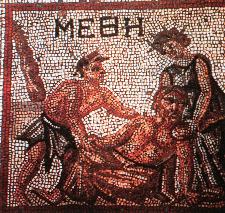 |
|
drinking contest |
drunken Heracles |
 |
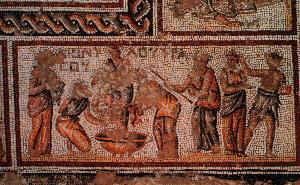 |
|
the "Mona Lisa of the Galilee" |
the bathing of Dionysus |
GO HERE (http://techunix.technion.ac.il/~meryzse/prof.html)
Delos: House of the Masks (Perseus):
page with thumbnails
(last photo from House of Dionysos)
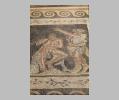 |
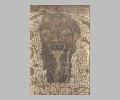 |
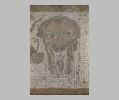 |
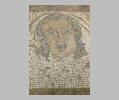 |
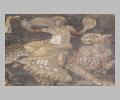 |
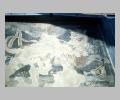 |
|
satyr |
a mask |
a mask |
a mask |
Dionysos on Panther |
winged and crowned Dionysos on panther
(House of Dionysos) |
|
Dr. J's Illustrated Dionysus Mosaics
from Delos...note the cluster of grapes and the panther motif |

 |
http://romanhistorybooksandmore.freeservers.com/p_cologneRG.htm
Resources on Various Aspects of the Roman
World:
for fun, see how many German names
today have Roman etymologies...http://www.behindthename.com/nmc/ger.html
|
|


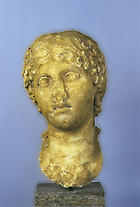
 Roman
sewer / Town Hall: Rare section of a Roman municipal sewage system. Example
of the engineering skill of Roman architects. Read the article at
Roman
sewer / Town Hall: Rare section of a Roman municipal sewage system. Example
of the engineering skill of Roman architects. Read the article at






